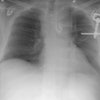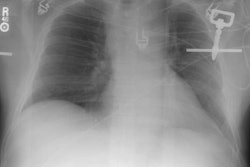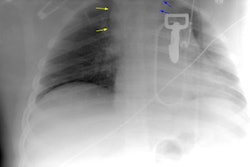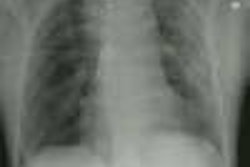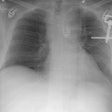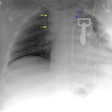AJR Am J Roentgenol 1996 Aug;167(2):397-402. MR imaging evaluation of hemidiaphragms in acute blunt trauma: experience with 16 patients.
Shanmuganathan K, Mirvis SE, White CS, Pomerantz SM
OBJECTIVE. The aim of this retrospective study was to evaluate the usefulness of MR imaging in excluding or confirming the diagnosis of diaphragmatic injury after blunt trauma. MATERIALS AND METHODS. MR imaging studies were performed in 16 patients with blunt trauma and with indeterminate radiographs of the chest suspicious for but not diagnostic of diaphragmatic injury. T1-weighted images were obtained in all patients, and fast gradient-echo pulse sequence images were obtained in 11 patients. The results of all imaging studies performed before the MR imaging studies and those performed during out-patient follow-up, including chest radiography and thoracoabdominal CT scanning, were reviewed for evidence of diaphragmatic injury. Medical records were reviewed to ascertain the indications for the MR imaging studies as well as the surgical findings and the duration of outpatient follow-up. RESULTS. MR imaging studies confirmed diaphragmatic injury in seven patients (44%) and revealed an intact diaphragm in nine (66%). In seven patients MR imaging studies were able to correctly reveal the site of the diaphragmatic tear and the abdominal viscera that herniated into the thoracic cavity. None of the nine patients with intact diaphragms on MR imaging studies had delayed presentation of a diaphragmatic rupture on outpatient follow-up. CONCLUSIONS. MR imaging studies can be reliably used to diagnose or exclude injury in blunt trauma patients.
PMID: 8686615, MUID: 96302017
